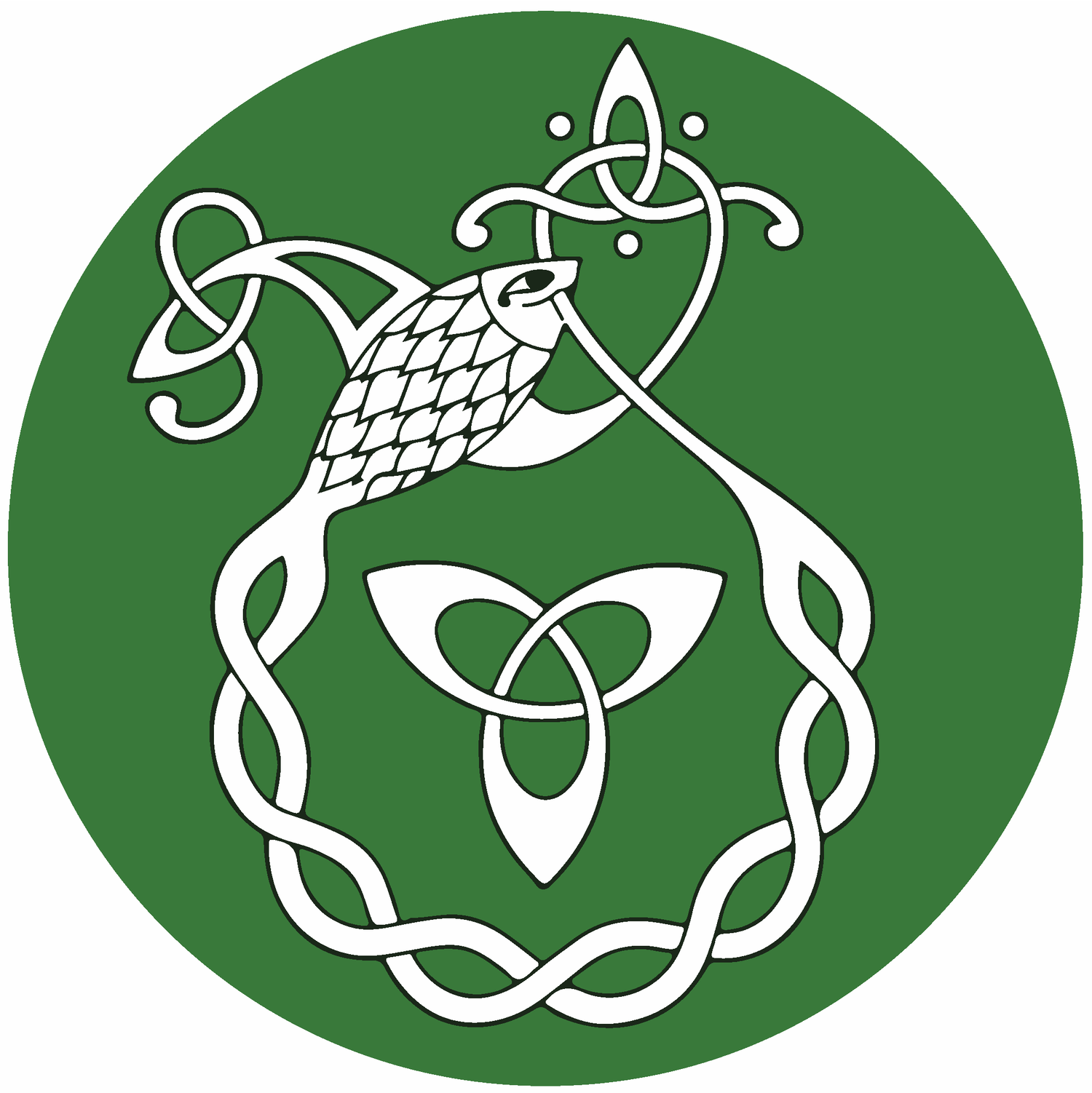Fánaí (1927)
Seán Óg Ó Caomhánaigh
"Fánaí " unfolds as a gripping adventure and love story set in the Northern U.S. during the Prohibition era. An Irish farmhand secretly marries his employer's sister. Heading across the border to the operating taverns in Emerson, Manitoba, the farmhand falls in with the wrong crowd and is forced to flee for his life. Years later, he returns in disguise to settle scores and reunite with his family. This novel unfortunately highlights contemporary racist stereotyping by casting the main villan, Pínn, as someone of mixed European and Indigenous ancestry.
“Cá bhfuil an leath-amadán san ag dul?” d’fhiafraigh an Seansánach nuair chonaic sé Féasóg [Seán Ó Lonargáin] ag caitheamh a phíce uaidh.
“Don bhanc,” d’fhreagair an Róisteach. D’imigh an Seansánach, agus thug sé cúntas an scéil do Phínn. Ní túisce sin ná Pínn ag cliathán Fhéasóig.
“An bhfuil sé tagtha sa deireadh?” d’fhiafraigh sé, agus é ar ballchrith le líonrith.
“Dealraíonn go bhfuil. Cad dhéanfad anois?”
Mhachnaigh Pínn. Tháinig breis scanraidh air chun an airgid. Labhair sé go haireach:
“Ná fill anseo in ao’ chor. Téir sall go hEmearson. Cuir tuairisc ‘Tábhairne na hAbhann Deirge’; agus fan liomsa go dtagad.”
“Cuimhneamh iontach. Raghadsa agus cuirfead balcais ghlan orm féin. Ná dearmhaid teacht chugham; fanfad leat.”
“Ní theipfead ort,” arsa Pínn, is a chroí ina bhéal.
Ghaibh Féasóg thar a chomhchaiteoir. Fuair sé caoi ar labhairt. “Gach fear agaibh i ‘Tábhairne na hAbhann Deirge’ in Emearson ar a naoi a chlog; an dtuigir?”
“Tuigim. Beam ann. Beir bua!” arsa an caiteoir.
Bhuail Seán Ó Lonargáin isteach don bhanc i Peimbineá, agus chuir tuairisc an bhainisteora.
“Táim anseo,” arsa fear meán-aosta; “an dteastaím uait?”
“Teastaír. Dúradh liom teacht anseo. Ná cuir aon nath im’ dhealramh,” arsa Seán Ó Lonargáin.
“An bhfuil aon aithne agat ar dhuine uasal i nGort Dearg dárbh ainm —”
“—Dochtúir Saomar,” do chríochnaigh Féasóg.
“Ceart agat,” arsa an bainisteoir, “mar seo led’ thoil,” agus threoraigh sé go cúlsheomra é. Chaith an bheirt acu tamall ansin ag caint le chéile. I ndeireadh an tseo-seá-sin d’oscail an bainisteoir tarracán, agus thóg deascán mór billí as.
“Seo,” ar seisean, “chúig céad dealar, iad uile droimbhuí.”
Chuirfidís uisce le béal éinne.
“Where is that simpleton going? asked Johnson when he saw Féasóg [Seán Ó Lonargáin] casting off his hay-fork.
“To the bank,” answered Roach. Johnson went, and he gave an account of the story to Pínn. No sooner than that and Pínn was at Féasóg’s side.
“Has he finally come?” he asked, and him shaking from running.
“It appears he has. What will I do now?”
Pínn thought. He became more afraid for the money. He spoke carefully:
“Don’t come back here at all. Go across to Emerson. Find the ‘Red River Tavern’; and wait for me until I come.”
“A wonderful idea. I will go and I will put new clothes on myself. Don’t forget to come for me; I will wait for you.”
“I won’t fail you,” said Pínn with his heart in his mouth.
Féasóg went past his partner. He found a way to speak.
“Every man of you into the ‘Red River Tavern’ in Emerson at nine o’clock; do you understand?”
“I understand. We will be there. Good luck!” said the partner.
Seán Ó Lonargáin strode into the bank in Pembina, and he found the manager.
“I’m here,” said a middle-aged man; “Do you want me?”
“I do. I was told to come here. Don’t put any stock in my appearance,” said Seán Ó Lonargáin.
“Do you happen to know a man in Gort Dearg called —”
“—Doctor Saomar,” finished Féasóg.
“You’re right,” said the manager, “And so, please,” and he directed him to the backroom. The two of them spent some time then talking together. After this chit-chat, the manager opened a drawer and took out a large bundle of bills.
“Here,” he said, “five hundred dollars, all of them certified.”
That would make anyone’s mouth water.
About the Author
Seán Óg Ó Caomhánach was born in Dún Chaoin, Corca Dhuibhne, in 1885. Seán’s life unfolded across teaching, literary creation, and linguistic preservation. He began as a traveling teacher, before venturing to the United States in 1914. He stayed for about seven years, working in mills and shipyards. His experiences working on a ranch in North Dakota, and his adventures across the Canadian border, became the inspiration for his novel "Fánáí."
Returning to Ireland, Seán Óg dedicated himself to the meticulous cataloguing of dialectical words in his native Kerry Irish and contributed significantly as an editor to Tomás de Bhaldraithe's English-Irish dictionary. He passed away in 1947, leaving an indelible mark on Irish literature and linguistic scholarship.
Seán Óg Ó Caomhánaigh’s contributions to Irish-Canadian literature and his connection to the larger movement in early Irish language emigrant fiction were highlighted by Pádraig Ó Siadhail in his contributions to the publication: Sumner, Natasha and Doyle, Aiden. 2020. North American Gaels. McGill-Queen's University Press: Montreal.
Adapted from: Ó Caomhánaigh, Seán Óg. 1928. Fánaí. 2ed. 184-185.
For citation, please use: Ó Caomhánaigh, Seán Óg. 1928. “Fánaí.” Ó Dubhghaill, Dónall. 2024. Na Gaeil san Áit Ró-Fhuar. Gaeltacht an Oileáin Úir: www.gaeilge.ca


